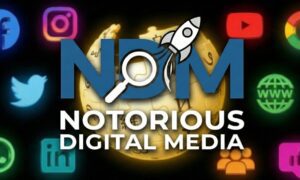The world of education is changing fast, and online education platforms are at the forefront of this transformation. With advancements in technology, learning is no longer confined to traditional classrooms. Instead, students and professionals can access high-quality education from anywhere in the world. This shift is reshaping how knowledge is delivered, consumed, and retained.
The Rise of Online Education Platforms
Over the past decade, online education has grown exponentially. Platforms like Coursera, Udemy, Khan Academy, and edX have made learning more accessible than ever before. The convenience of studying at one’s own pace, coupled with a vast range of courses, has attracted millions of learners worldwide.
One of the key drivers behind this growth is the increasing demand for flexible learning options. Professionals seeking career advancement, students looking for supplementary education, and even retirees pursuing new hobbies are turning to online courses. Additionally, the COVID-19 pandemic accelerated the adoption of digital learning, proving that education can thrive outside traditional institutions.
Key Benefits of Online Learning
Flexibility and Convenience
Unlike traditional classrooms, online education allows learners to study at their own pace. Whether you’re a working professional or a full-time student, you can access course materials anytime, anywhere. This flexibility makes it easier to balance education with other responsibilities.
A Wide Range of Courses
From coding and business management to art and philosophy, online platforms offer an extensive selection of subjects. Learners can choose from free courses, certificate programs, or even full degree programs. This variety ensures that there is something for everyone.
Cost-Effectiveness
Online courses are often more affordable than traditional education. Many platforms provide free resources, while paid courses are still significantly cheaper than university tuition. Additionally, learners save money on commuting, textbooks, and accommodation.
Access to Global Experts
Top universities and industry leaders collaborate with online platforms to offer high-quality courses. This means learners can gain knowledge from Harvard, MIT, or Google without leaving their homes. Such access was unimaginable just a few decades ago.
Self-Paced Learning
Everyone learns differently. Online education allows individuals to revisit lectures, pause videos, and take breaks when needed. This personalized approach enhances comprehension and retention.
Challenges of Online Education
Despite its many advantages, online learning is not without challenges. Understanding these hurdles can help improve the overall experience for students and educators alike.
Lack of Face-to-Face Interaction
One of the biggest drawbacks is the absence of in-person communication. Some learners thrive in social environments, and the isolation of online learning can be discouraging. However, many platforms now incorporate live discussions, forums, and group projects to bridge this gap.
Self-Discipline and Motivation
Without a structured classroom setting, some students struggle with procrastination. Staying motivated requires strong self-discipline, which can be difficult without external accountability. Setting clear goals and schedules can help overcome this issue.
Technical Barriers
Not everyone has access to reliable internet or modern devices. In some regions, poor connectivity limits the effectiveness of online education. Additionally, older learners may find it challenging to adapt to digital tools.
Quality and Credibility Concerns
With countless courses available, not all are created equal. Some lack depth, while others may not be recognized by employers. It’s essential to research platforms and read reviews before enrolling in any program.
How Online Education is Shaping the Future
The impact of online learning extends beyond convenience—it is revolutionizing education in fundamental ways.
Democratizing Education
Online platforms break down geographical and financial barriers. A student in a remote village can now learn from the same professors as someone in a major city. This inclusivity is leveling the playing field in global education.
Lifelong Learning and Upskilling
The job market is constantly changing, and professionals must keep up. Online courses make it easier to acquire new skills without taking long career breaks. Platforms like LinkedIn Learning and Skillshare focus on career-oriented training, helping individuals stay competitive.
Integration of Advanced Technologies
Artificial Intelligence (AI), Virtual Reality (VR), and gamification are enhancing online learning. AI-powered tutors provide personalized feedback, while VR creates immersive learning environments. These innovations make education more engaging and effective.
Hybrid Learning Models
Many institutions now blend online and in-person learning. This hybrid approach offers the best of both worlds—flexibility and human interaction. As technology improves, we can expect even more seamless integration.
The Future of Online Education Platforms
The future looks bright for digital learning. As technology advances, we can expect even more interactive and adaptive platforms. Here are some trends to watch:
Increased Use of AI and Machine Learning
AI will play a bigger role in customizing learning experiences. From recommending courses to grading assignments, automation will make education more efficient.
Expansion of Micro-Credentials
Short, skill-specific certifications (micro-credentials) are gaining popularity. Employers value these focused qualifications, making them a great alternative to traditional degrees.
Growth in Corporate E-Learning
Companies are investing in online training for employees. Platforms like Udemy for Business and Coursera for Enterprise help organizations upskill their workforce efficiently.
Virtual and Augmented Reality in Classrooms
Imagine studying history by virtually walking through ancient Rome or learning biology through 3D models. VR and AR will make complex subjects more tangible.
Conclusion
Online education platforms are transforming how we learn, making education more accessible, flexible, and innovative. While challenges remain, the benefits far outweigh the drawbacks. Furthermore, these platforms will play an even bigger role in shaping the future of education. Whether you’re a student, professional, or lifelong learner, embracing online education can open doors to endless opportunities. The classroom of the future is digital—and it’s already here.



































